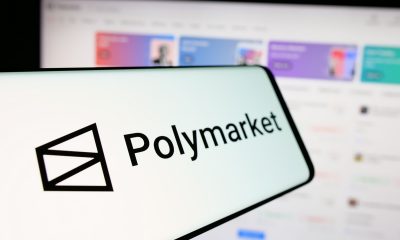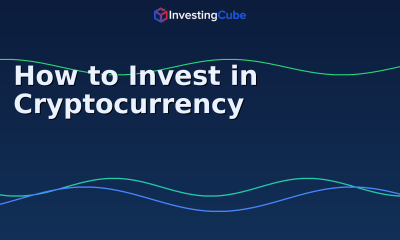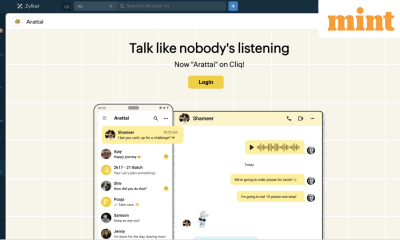

Metaverse
What Satya Nadella’s latest shakeup says about Microsoft’s evolving AI strategy – Crypto News
Microsoft’s initial momentum in AI came from its data centre capacity and its partnership with OpenAI. Now, with competition intensifying and external pressure mounting, Microsoft is diversifying beyond OpenAI, recalibrating its infrastructure, and reshaping its core products.
Partnership strain
Microsoft’s partnership with OpenAI, established in 2019, was key to its AI strategy. It invested over $13 billion in the AI startup, securing exclusive cloud hosting rights through Azure and integrating OpenAI’s technology into products such as Copilot and GitHub. The partnership helped Microsoft surge ahead when ChatGPT launched in 2022, boosting Azure, which generated $75 billion in revenue by July 2025. However, the relationship has become strained.
OpenAI, which has now become the world’s top private company by valuation, has been looking beyond Microsoft with a $300 billion Oracle deal, and partnering with SoftBank and Nvidia on the Stargate data centre project. A contentious ‘AGI clause’ could limit Microsoft’s access to future models if OpenAI achieves artificial general intelligence.
In response, Microsoft is diversifying its AI portfolio, incorporating models from Anthropic, xAI, Meta and others. The company is also developing its own AI model, MAI-1-preview. Both companies signed a non-binding agreement in September 2025 for a continued partnership. However, this partnership, once pivotal to Microsoft, has become just one element in a broader, more cautious approach.
Infrastructure pivot
Microsoft’s shift away from OpenAI is perhaps most visible in its approach to infrastructure. Microsoft declined to be a part of OpenAI’s $500 billion Stargate project, preferring more diversified, globally distributed facilities.
It is betting big on its own AI infrastructure. Its capital expenditure is projected to hit $120 billion in FY26, up from $88.2 billion in FY25 (Microsoft’s financial year runs from July 1 to June 30 of the following year). This capex will fund projects such as Wisconsin’s Fairwater data centre with Nvidia GB200 GPUs and a $15 billion push into UK infrastructure.
Microsoft is also betting on neoclouds (specialised cloud providers offering high-performance, AI-optimised infrastructure) to address capacity shortages. It has committed more than $33 billion to neocloud providers such as Nebius ($19.4 billion) and CoreWeave. This gives the company faster access to advanced AI computing power. Crucially, shifting internal workloads to neoclouds frees up Microsoft’s own data centres to serve lucrative cloud customers.
Data centres have been facing criticism over their environmental impact. Microsoft aims to become carbon-negative by 2030. It is moving in this direction by signing renewable energy deals, including a 100-megawatt agreement with Japan’s Shizen Energy, restarting Pennsylvania’s Three Mile Island nuclear reactor to generate 835 megawatts of electricity, and developing more efficient systems.
Embedded intelligence
Following the reorganisation, Nadella expects to increase his focus on product innovation. Microsoft is betting that AI-powered applications will drive future growth. While AI models may have become commoditised, integrating its Copilot assistant across Microsoft 365 could give Microsoft a competitive advantage.
It has already integrated Copilot into Excel, Teams, Word and other applications, and this approach has seen success with the company’s traditional customers—large enterprises. Nearly 70% of Fortune 500 companies use the service, with daily usage increasing substantially, Microsoft said. For example, Vodafone deployed Copilot to 68,000 employees following tests that indicated time savings, while Barclays is implementing it for 100,000 workers globally, Microsoft said in a recent earnings calls.
The company is also using this strategy to compete in consumer markets. This month it launched a $19.99 premium subscription that bundles AI with traditional Office applications, directly challenging ChatGPT. Both commercial and consumer segments are growing. Though smaller than the commercial business, the consumer segment of Microsoft 365 grew to $7.4 billion in FY25 from $6.6 billion in the previous year.
Gaming struggles
Microsoft’s gaming division is seeing changes, too, as it steps up on subscription services amid mounting financial pressure. The company acquired Activision Blizzard for $69 billion in 2023 to bolster its Game Pass library, though the merger drew criticism that it could harm both developers and gamers.
Game Pass reached 34 million subscribers and nearly $5 billion in revenue in FY25, but subscriber growth slowed dramatically from 80% over 2020-2021 to 36% over 2022-2024. Its day-one release strategy for major titles proved costly. Microsoft forfeited over $300 million in Call of Duty sales by offering the game through Game Pass instead of selling it traditionally, Bloomberg reported, citing a former employee. Microsoft recently raised Game Pass Ultimate prices by 50% to $30 a month, or $359.88 a year.
Meanwhile, Xbox consoles face steep competition from Sony PlayStation and Nintendo, with hardware revenue dropping 25% in FY25. Microsoft has raised console prices twice this year. Overall gaming revenue has dropped in the past two quarters.
Political crosshairs
Microsoft concluded FY25 with over $101 billion of profit and $94.6 billion in cash reserves. However, the company faces mounting external pressure, including some from the Trump administration, which imposed a $100,000 fee on new H-1B visa applications, potentially constraining Microsoft’s access to talent. Microsoft is a heavy user of H-1B visas, and Nadella himself was a H-1B visa holder early in his career. Also, last month President Trump demanded Microsoft fire its global affairs president Lisa Monaco, citing national security concerns.
There are geopolitical factors in play as well. Microsoft was pushed to disable Israeli military use of its software after finding evidence of mass surveillance data from millions of Palestinian mobile phone calls stored on its cloud servers. On the regulatory front, the company narrowly avoided EU fines over Teams bundling by offering separate versions and improving interoperability. Meanwhile, the UK’s Competition and Markets Authority found Microsoft’s cloud licensing practices harm competition.
Althoff’s promotion to lead commercial operations was meant to give Nadella space to focus on AI innovation. But as Microsoft navigates partner tensions, regulatory scrutiny and political pressure, he faces challenges that extend far beyond technical work, requiring strategic agility and diplomatic finesse in equal measure.
www.howindialives.com is a database and search engine for public data.
-

 Blockchain5 days ago
Blockchain5 days agoIt’s About Trust as NYSE Owner, Polymarket Bet on Tokenization – Crypto News
-
Business1 week ago
REX-Osprey Files For ADA, HYPE, XLM, SUI ETFs as Crypto ETF Frenzy Heats Up – Crypto News
-

 others1 week ago
others1 week agoUSD/JPY returns below 147.00 amid generalized Dollar weakness – Crypto News
-

 others1 week ago
others1 week agoUK firms’ inflation expectations seen higher at 3.5% in the September quarter – Crypto News
-

 Cryptocurrency1 week ago
Cryptocurrency1 week agoBREAKING: Bitcoin Reclaims $120K. Is ATH Next? – Crypto News
-

 Blockchain1 week ago
Blockchain1 week agoRobinhood CEO Says Asset Tokenization ‘Can’t Be Stopped’ – Crypto News
-
others1 week ago
Fed’s Lorie Logan Urges Caution on Further Rate Cuts Citing Inflation Risks – Crypto News
-
Business1 week ago
Nasdaq-Listed Fitell Adds Pump.fun’s PUMP To Supplement Solana Treasury – Crypto News
-

 others1 week ago
others1 week agoEUR/USD remains bid as investors ramp up bets of Fed rate cuts – Crypto News
-

 Cryptocurrency1 week ago
Cryptocurrency1 week agoA Complete Guide for Beginners – Crypto News
-

 Cryptocurrency1 week ago
Cryptocurrency1 week agoXRP and DOGE ETFs Push $500 Million Milestone for U.S. Investment Fund – Crypto News
-

 Cryptocurrency1 week ago
Cryptocurrency1 week agoPrivate Key Leakage Remains the Leading Cause of Crypto Theft in Q3 2025 – Crypto News
-
Business1 week ago
99.3% of Bitcoin Supply in Profit, Analyst Warns of Short-Term Correction – Crypto News
-

 Technology1 week ago
Technology1 week agoWhat Arattai, Zoho’s homegrown messaging app offers: Key features, how to download, top FAQs explained – Crypto News
-

 Technology6 days ago
Technology6 days agoDiwali bonanza: iPhone 16 Pro Max price crashes by up to ₹55,000 on Flipkart – Don’t miss out! – Crypto News
-

 Cryptocurrency1 week ago
Cryptocurrency1 week agoWhat happens when $1.8M RLUSD enters the market – Is it an XRP rally? – Crypto News
-

 others1 week ago
others1 week agoPound Sterling trades firmly against Greenback on slowing US job demand – Crypto News
-
Business1 week ago
BNB Leads Crypto Market Rally With Fresh All-Time High, Expert Sees $5000 Upside – Crypto News
-
Technology1 week ago
Tech Giant Samsung Taps Coinbase To Provide Crypto Access, Driving Adoption – Crypto News
-
others1 week ago
Bitget Joins UNICEF Game Jam To Train 300,000 Youths In Blockchain – Crypto News
-
others1 week ago
MetaMask Gears Up for Major MASK Token Airdrop With Reward Points System Launch – Crypto News
-

 Technology1 week ago
Technology1 week agoGemini Nano Banana hacks: How to make AI-powered handwritten Diwali 2025 invites, reveals Google – Crypto News
-
Technology1 week ago
Expert Predicts SHIB Rally as Shiba Inu Restores Shibarium After $4M Hack Shutdown – Crypto News
-

 Cryptocurrency1 week ago
Cryptocurrency1 week agoPrivate Key Leakage Remains the Leading Cause of Crypto Theft in Q3 2025 – Crypto News
-

 Technology1 week ago
Technology1 week agoBoom or bubble: How long can the AI investment craze last? – Crypto News
-
Technology1 week ago
Breaking: CME to Launch 24/7 Crypto Futures Trading Amid Rising Institutional Demand – Crypto News
-

 Blockchain1 week ago
Blockchain1 week agoETHZilla CEO Predicts Ethereum as Future of Finance – Crypto News
-

 De-fi1 week ago
De-fi1 week agoZcash Leads Rally as Bitcoin Surpasses $120,000 – Crypto News
-
others1 week ago
Bitcoin Price Hits $120K, Is Citigroup’s Bold Q4 Prediction in Motion? – Crypto News
-

 Technology1 week ago
Technology1 week agoAravind Srinivas takes a jab at Google as $200 Perplexity Comet browser goes free: ‘O hey hi Chrome!’ – Crypto News
-
Business1 week ago
BNB Rally to $1,300 Will Continue As Binance Hits Crucial Q3 Milestone, Says Expert – Crypto News
-

 Technology1 week ago
Technology1 week agoExclusive discounts on newly launched 2025 tablets with up to 53% off from Apple, Samsung, Lenovo, Xiaomi and OnePlus – Crypto News
-

 Metaverse1 week ago
Metaverse1 week agoAI chatbots move toward a future with advertising and online shopping – Crypto News
-

 Cryptocurrency1 week ago
Cryptocurrency1 week agoETF inflows, ‘debasement trade’ fuel bitcoin’s climb above $123K – Crypto News
-
Business1 week ago
Pro-Crypto Mike Selig Emerges As CFTC Chair Frontrunner, Gains Ripple CLO’s Endorsement – Crypto News
-
Technology1 week ago
‘Every Crypto ETF You Can Imagine’: Expert Predicts Flurry of Filings After REX-Osprey’s 21 Applications – Crypto News
-

 Blockchain1 week ago
Blockchain1 week agoBitcoin And XRP Are Testing Key Resistances And Could Turn Bloody Again, Here’s Why – Crypto News
-
others1 week ago
Trump’s Real Estate Moves On-Chain as Hut8 Adds WLFI Tokens to Boost Treasury – Crypto News
-

 Technology1 week ago
Technology1 week agoIndonesia Revokes TikTok License Suspension After Data Submitted – Crypto News
-

 Cryptocurrency1 week ago
Cryptocurrency1 week agoStripe’s USDC Transfers Exceed $100 Million on Polygon, Base, Ethereum – Crypto News
-

 Cryptocurrency1 week ago
Cryptocurrency1 week agoBitcoin hits a 6-week high above $120,000, defying a government shutdown – Crypto News
-

 Blockchain7 days ago
Blockchain7 days agoBitcoin’s $125k Record Fueled By US Gov’t Shutdown, Macro Factors: Analysts – Crypto News
-
Technology7 days ago
Dogecoin Price Rebounds 15% From Buy Zone as Whales Add 30M DOGE – Can Bulls Push Beyond $0.30? – Crypto News
-

 Technology7 days ago
Technology7 days agoOnePlus 15 global launch date, specifications and images leaked ahead of launch: Here’s what to expect – Crypto News
-

 Metaverse6 days ago
Metaverse6 days agoIs AI really stealing your job? New Yale study fact-checks claims and finds out the culprits – Crypto News
-

 Metaverse6 days ago
Metaverse6 days agoHow AI search is disrupting SEO, e-commerce and journalism – Crypto News
-

 Cryptocurrency6 days ago
Cryptocurrency6 days agoEthereum can rally to $5,900 in October – but ONLY IF… – Crypto News
-
Business6 days ago
Whale Dumps Massive $55 Million in XRP to Ripple as Coin Falls Below $3? – Crypto News
-

 Technology6 days ago
Technology6 days agoOxygenOS 16 to launch in India on October 16: List of OnePlus devices likely to get the update – Crypto News
-
Technology6 days ago
Fed’s Schmid Signals Opposition to Further Rate Cuts With Inflation ‘Too High’ – Crypto News


Metaverse
What Satya Nadella’s latest shakeup says about Microsoft’s evolving AI strategy – Crypto News
Microsoft’s initial momentum in AI came from its data centre capacity and its partnership with OpenAI. Now, with competition intensifying and external pressure mounting, Microsoft is diversifying beyond OpenAI, recalibrating its infrastructure, and reshaping its core products.
Partnership strain
Microsoft’s partnership with OpenAI, established in 2019, was key to its AI strategy. It invested over $13 billion in the AI startup, securing exclusive cloud hosting rights through Azure and integrating OpenAI’s technology into products such as Copilot and GitHub. The partnership helped Microsoft surge ahead when ChatGPT launched in 2022, boosting Azure, which generated $75 billion in revenue by July 2025. However, the relationship has become strained.
OpenAI, which has now become the world’s top private company by valuation, has been looking beyond Microsoft with a $300 billion Oracle deal, and partnering with SoftBank and Nvidia on the Stargate data centre project. A contentious ‘AGI clause’ could limit Microsoft’s access to future models if OpenAI achieves artificial general intelligence.
In response, Microsoft is diversifying its AI portfolio, incorporating models from Anthropic, xAI, Meta and others. The company is also developing its own AI model, MAI-1-preview. Both companies signed a non-binding agreement in September 2025 for a continued partnership. However, this partnership, once pivotal to Microsoft, has become just one element in a broader, more cautious approach.
Infrastructure pivot
Microsoft’s shift away from OpenAI is perhaps most visible in its approach to infrastructure. Microsoft declined to be a part of OpenAI’s $500 billion Stargate project, preferring more diversified, globally distributed facilities.
It is betting big on its own AI infrastructure. Its capital expenditure is projected to hit $120 billion in FY26, up from $88.2 billion in FY25 (Microsoft’s financial year runs from July 1 to June 30 of the following year). This capex will fund projects such as Wisconsin’s Fairwater data centre with Nvidia GB200 GPUs and a $15 billion push into UK infrastructure.
Microsoft is also betting on neoclouds (specialised cloud providers offering high-performance, AI-optimised infrastructure) to address capacity shortages. It has committed more than $33 billion to neocloud providers such as Nebius ($19.4 billion) and CoreWeave. This gives the company faster access to advanced AI computing power. Crucially, shifting internal workloads to neoclouds frees up Microsoft’s own data centres to serve lucrative cloud customers.
Data centres have been facing criticism over their environmental impact. Microsoft aims to become carbon-negative by 2030. It is moving in this direction by signing renewable energy deals, including a 100-megawatt agreement with Japan’s Shizen Energy, restarting Pennsylvania’s Three Mile Island nuclear reactor to generate 835 megawatts of electricity, and developing more efficient systems.
Embedded intelligence
Following the reorganisation, Nadella expects to increase his focus on product innovation. Microsoft is betting that AI-powered applications will drive future growth. While AI models may have become commoditised, integrating its Copilot assistant across Microsoft 365 could give Microsoft a competitive advantage.
It has already integrated Copilot into Excel, Teams, Word and other applications, and this approach has seen success with the company’s traditional customers—large enterprises. Nearly 70% of Fortune 500 companies use the service, with daily usage increasing substantially, Microsoft said. For example, Vodafone deployed Copilot to 68,000 employees following tests that indicated time savings, while Barclays is implementing it for 100,000 workers globally, Microsoft said in a recent earnings calls.
The company is also using this strategy to compete in consumer markets. This month it launched a $19.99 premium subscription that bundles AI with traditional Office applications, directly challenging ChatGPT. Both commercial and consumer segments are growing. Though smaller than the commercial business, the consumer segment of Microsoft 365 grew to $7.4 billion in FY25 from $6.6 billion in the previous year.
Gaming struggles
Microsoft’s gaming division is seeing changes, too, as it steps up on subscription services amid mounting financial pressure. The company acquired Activision Blizzard for $69 billion in 2023 to bolster its Game Pass library, though the merger drew criticism that it could harm both developers and gamers.
Game Pass reached 34 million subscribers and nearly $5 billion in revenue in FY25, but subscriber growth slowed dramatically from 80% over 2020-2021 to 36% over 2022-2024. Its day-one release strategy for major titles proved costly. Microsoft forfeited over $300 million in Call of Duty sales by offering the game through Game Pass instead of selling it traditionally, Bloomberg reported, citing a former employee. Microsoft recently raised Game Pass Ultimate prices by 50% to $30 a month, or $359.88 a year.
Meanwhile, Xbox consoles face steep competition from Sony PlayStation and Nintendo, with hardware revenue dropping 25% in FY25. Microsoft has raised console prices twice this year. Overall gaming revenue has dropped in the past two quarters.
Political crosshairs
Microsoft concluded FY25 with over $101 billion of profit and $94.6 billion in cash reserves. However, the company faces mounting external pressure, including some from the Trump administration, which imposed a $100,000 fee on new H-1B visa applications, potentially constraining Microsoft’s access to talent. Microsoft is a heavy user of H-1B visas, and Nadella himself was a H-1B visa holder early in his career. Also, last month President Trump demanded Microsoft fire its global affairs president Lisa Monaco, citing national security concerns.
There are geopolitical factors in play as well. Microsoft was pushed to disable Israeli military use of its software after finding evidence of mass surveillance data from millions of Palestinian mobile phone calls stored on its cloud servers. On the regulatory front, the company narrowly avoided EU fines over Teams bundling by offering separate versions and improving interoperability. Meanwhile, the UK’s Competition and Markets Authority found Microsoft’s cloud licensing practices harm competition.
Althoff’s promotion to lead commercial operations was meant to give Nadella space to focus on AI innovation. But as Microsoft navigates partner tensions, regulatory scrutiny and political pressure, he faces challenges that extend far beyond technical work, requiring strategic agility and diplomatic finesse in equal measure.
www.howindialives.com is a database and search engine for public data.
-

 Blockchain5 days ago
Blockchain5 days agoIt’s About Trust as NYSE Owner, Polymarket Bet on Tokenization – Crypto News
-
Business1 week ago
REX-Osprey Files For ADA, HYPE, XLM, SUI ETFs as Crypto ETF Frenzy Heats Up – Crypto News
-

 others1 week ago
others1 week agoUSD/JPY returns below 147.00 amid generalized Dollar weakness – Crypto News
-

 others1 week ago
others1 week agoUK firms’ inflation expectations seen higher at 3.5% in the September quarter – Crypto News
-

 Cryptocurrency1 week ago
Cryptocurrency1 week agoBREAKING: Bitcoin Reclaims $120K. Is ATH Next? – Crypto News
-

 Blockchain1 week ago
Blockchain1 week agoRobinhood CEO Says Asset Tokenization ‘Can’t Be Stopped’ – Crypto News
-
others1 week ago
Fed’s Lorie Logan Urges Caution on Further Rate Cuts Citing Inflation Risks – Crypto News
-
Business1 week ago
Nasdaq-Listed Fitell Adds Pump.fun’s PUMP To Supplement Solana Treasury – Crypto News
-

 others1 week ago
others1 week agoEUR/USD remains bid as investors ramp up bets of Fed rate cuts – Crypto News
-

 Cryptocurrency1 week ago
Cryptocurrency1 week agoA Complete Guide for Beginners – Crypto News
-

 Cryptocurrency1 week ago
Cryptocurrency1 week agoXRP and DOGE ETFs Push $500 Million Milestone for U.S. Investment Fund – Crypto News
-

 Cryptocurrency1 week ago
Cryptocurrency1 week agoPrivate Key Leakage Remains the Leading Cause of Crypto Theft in Q3 2025 – Crypto News
-
Business1 week ago
99.3% of Bitcoin Supply in Profit, Analyst Warns of Short-Term Correction – Crypto News
-

 Technology1 week ago
Technology1 week agoWhat Arattai, Zoho’s homegrown messaging app offers: Key features, how to download, top FAQs explained – Crypto News
-

 Technology6 days ago
Technology6 days agoDiwali bonanza: iPhone 16 Pro Max price crashes by up to ₹55,000 on Flipkart – Don’t miss out! – Crypto News
-

 Cryptocurrency1 week ago
Cryptocurrency1 week agoWhat happens when $1.8M RLUSD enters the market – Is it an XRP rally? – Crypto News
-

 others1 week ago
others1 week agoPound Sterling trades firmly against Greenback on slowing US job demand – Crypto News
-
Business1 week ago
BNB Leads Crypto Market Rally With Fresh All-Time High, Expert Sees $5000 Upside – Crypto News
-
Technology1 week ago
Tech Giant Samsung Taps Coinbase To Provide Crypto Access, Driving Adoption – Crypto News
-
others1 week ago
Bitget Joins UNICEF Game Jam To Train 300,000 Youths In Blockchain – Crypto News
-
others1 week ago
MetaMask Gears Up for Major MASK Token Airdrop With Reward Points System Launch – Crypto News
-

 Technology1 week ago
Technology1 week agoGemini Nano Banana hacks: How to make AI-powered handwritten Diwali 2025 invites, reveals Google – Crypto News
-
Technology1 week ago
Expert Predicts SHIB Rally as Shiba Inu Restores Shibarium After $4M Hack Shutdown – Crypto News
-

 Cryptocurrency1 week ago
Cryptocurrency1 week agoPrivate Key Leakage Remains the Leading Cause of Crypto Theft in Q3 2025 – Crypto News
-

 Technology1 week ago
Technology1 week agoBoom or bubble: How long can the AI investment craze last? – Crypto News
-
Technology1 week ago
Breaking: CME to Launch 24/7 Crypto Futures Trading Amid Rising Institutional Demand – Crypto News
-

 Blockchain1 week ago
Blockchain1 week agoETHZilla CEO Predicts Ethereum as Future of Finance – Crypto News
-

 De-fi1 week ago
De-fi1 week agoZcash Leads Rally as Bitcoin Surpasses $120,000 – Crypto News
-
others1 week ago
Bitcoin Price Hits $120K, Is Citigroup’s Bold Q4 Prediction in Motion? – Crypto News
-

 Technology1 week ago
Technology1 week agoAravind Srinivas takes a jab at Google as $200 Perplexity Comet browser goes free: ‘O hey hi Chrome!’ – Crypto News
-
Business1 week ago
BNB Rally to $1,300 Will Continue As Binance Hits Crucial Q3 Milestone, Says Expert – Crypto News
-

 Technology1 week ago
Technology1 week agoExclusive discounts on newly launched 2025 tablets with up to 53% off from Apple, Samsung, Lenovo, Xiaomi and OnePlus – Crypto News
-

 Metaverse1 week ago
Metaverse1 week agoAI chatbots move toward a future with advertising and online shopping – Crypto News
-

 Cryptocurrency1 week ago
Cryptocurrency1 week agoETF inflows, ‘debasement trade’ fuel bitcoin’s climb above $123K – Crypto News
-
Business1 week ago
Pro-Crypto Mike Selig Emerges As CFTC Chair Frontrunner, Gains Ripple CLO’s Endorsement – Crypto News
-
Technology1 week ago
‘Every Crypto ETF You Can Imagine’: Expert Predicts Flurry of Filings After REX-Osprey’s 21 Applications – Crypto News
-

 Blockchain1 week ago
Blockchain1 week agoBitcoin And XRP Are Testing Key Resistances And Could Turn Bloody Again, Here’s Why – Crypto News
-
others1 week ago
Trump’s Real Estate Moves On-Chain as Hut8 Adds WLFI Tokens to Boost Treasury – Crypto News
-

 Technology1 week ago
Technology1 week agoIndonesia Revokes TikTok License Suspension After Data Submitted – Crypto News
-

 Cryptocurrency1 week ago
Cryptocurrency1 week agoStripe’s USDC Transfers Exceed $100 Million on Polygon, Base, Ethereum – Crypto News
-

 Cryptocurrency1 week ago
Cryptocurrency1 week agoBitcoin hits a 6-week high above $120,000, defying a government shutdown – Crypto News
-

 Blockchain7 days ago
Blockchain7 days agoBitcoin’s $125k Record Fueled By US Gov’t Shutdown, Macro Factors: Analysts – Crypto News
-
Technology7 days ago
Dogecoin Price Rebounds 15% From Buy Zone as Whales Add 30M DOGE – Can Bulls Push Beyond $0.30? – Crypto News
-

 Technology7 days ago
Technology7 days agoOnePlus 15 global launch date, specifications and images leaked ahead of launch: Here’s what to expect – Crypto News
-

 Metaverse6 days ago
Metaverse6 days agoIs AI really stealing your job? New Yale study fact-checks claims and finds out the culprits – Crypto News
-

 Metaverse6 days ago
Metaverse6 days agoHow AI search is disrupting SEO, e-commerce and journalism – Crypto News
-

 Cryptocurrency6 days ago
Cryptocurrency6 days agoEthereum can rally to $5,900 in October – but ONLY IF… – Crypto News
-
Business6 days ago
Whale Dumps Massive $55 Million in XRP to Ripple as Coin Falls Below $3? – Crypto News
-

 Technology6 days ago
Technology6 days agoOxygenOS 16 to launch in India on October 16: List of OnePlus devices likely to get the update – Crypto News
-
Technology6 days ago
Fed’s Schmid Signals Opposition to Further Rate Cuts With Inflation ‘Too High’ – Crypto News


















